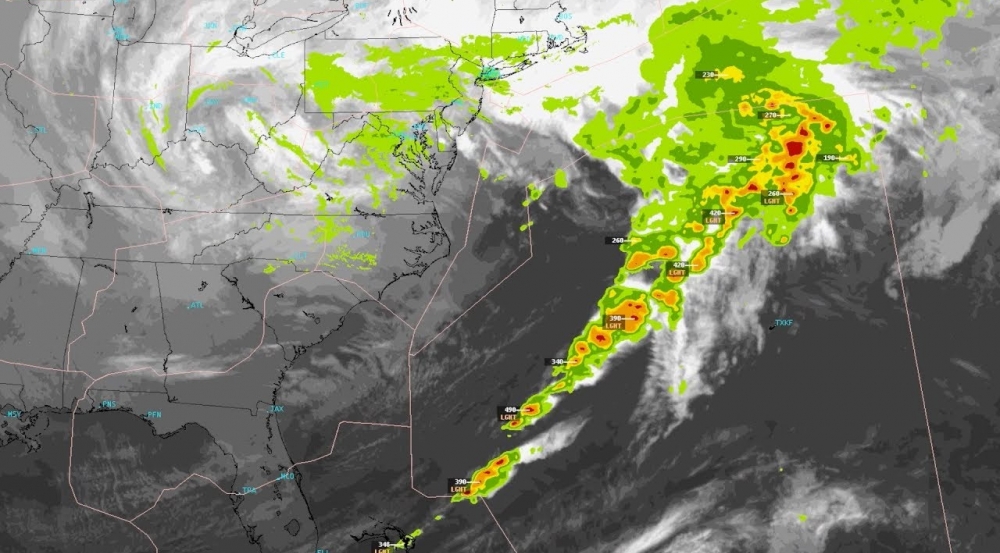
Painting a full picture of weather conditions

When Hurricane Maria slammed into Puerto Rico last fall, it took out the storm-tracking eyes of the island. Its only NEXRAD radar was destroyed by winds measured at 145 miles per hour. With forecasters blind to weather conditions, the National Weather Service turned to a new tool developed by Lincoln Laboratory and the Federal Aviation Administration (FAA). Called the Offshore Precipitation Capability (OPC), the tool acts as a "surrogate" radar. That is, it fuses satellite imagery, lightning data, and weather models to estimate the location and intensity of precipitation in areas where radar coverage is unavailable. A machine learning framework then turns this estimation into a radar-like image. The tool has proven to be just about as accurate as the real thing.
"It’s a best estimate of what the weather likely is," said James Kuchar, the leader of the Air Traffic Control Systems Group at Lincoln Laboratory. "While OPC has now proven useful for disaster response, it's primarily a tool for air traffic controllers to see and track storms outside of radar coverage." The motivation for OPC was to help air traffic controllers manage a gap in radar coverage between Florida and Puerto Rico — an area over the ocean where land-based radars couldn't reach. Although passenger jets are equipped with radars, giving pilots a view of weather, this view isn't complete and can't be relayed back to air traffic controllers, who need this information to help pilots reroute around bad weather. Today, air traffic controllers in Houston, Miami, San Juan, and New York, and at the National Air Traffic Control System Command Center near Washington, D.C. are using OPC to help plan safe, efficient routes through oceanic airspace. Work is currently underway to expand OPC for use in other parts of the world.
Watch the video above to learn more about how OPC works.